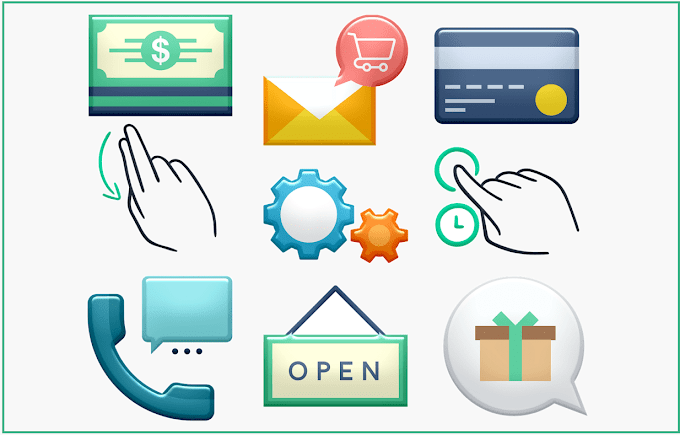
In the lively mix of human stories, diversity is a colorful string that runs through all parts of life. To design with accessibility and inclusion means to recognize this variety not only as a requirement or moral duty but also as an appreciation for it. Our article dives deep into designing for accessibility and inclusion, explaining all the complex details while focusing on the latest information and strategies to make our world more welcoming.
The Foundation of Inclusive Design
Design that is for everyone and considers people's differences. Inclusive design understands that everyone experiences the world in different ways, so it involves making products, services and environments friendly to all regardless of age, gender, abilities or culture. The main aim is to eliminate obstacles and encourage participation by offering fair entry and chances for everybody involved.
Principles of Accessible Design
Accessible design is guided by principles that ensure usability for people with disabilities. These principles include:
1. Equitable Use: Designing for people with diverse abilities.
Provide alternative formats for content, such as audio descriptions, for those with visual impairments.
Ensure website navigation using only a keyboard for those who cannot use a mouse.
Ensure ease of understanding regardless of the user's experience or knowledge.
Communicate necessary information effectively, regardless of the user's sensory abilities.
Providing appropriate space for accessibility, regardless of the user’s body size, posture, or mobility.
2. Flexibility in Use: Designing for diverse technologies
- Provide adjustable text sizes and color contrast options.
- Incorporate customizable settings for users to personalize their experience.
- Provide clear error warnings, undo options, and helpful tips and ideas to prevent unwanted risks and consequences.
- Allowing efficient and comfortable use with minimal fatigue.
Key inclusive design elements and how to implement them
Here are some key aspects to consider:
1. Perceivable Information
Content must be presented in ways that all users can perceive. This includes
Providing textual content alternatives for non-text content material, along with photographs or films, so it may be modified into different kinds human beings want, like massive print, braille, speech, symbols, or less difficult language.
Creating multimedia content with captions and audio explanations while ensuring flexibility without compromising structure or information.
2. Operable User Interface
Users must be able to operate the interface. This involves:
- Making sure that all actions can be performed from a keyboard if needed.
- Providing users enough time to read and use the content.
- Providing ways to help users navigate, find content, and determine where they are.
3. Understandable Information and User Interface
Information and the operation of the user interface must be understandable. To achieve this:
- Make text content readable and understandable.
- Make web pages appear and operate in predictable ways.
- Help users avoid and correct mistakes.
4. Robust Content and Reliable Interpretation
Content must be robust enough to be interpreted reliably by a wide variety of user agents, including assistive technologies. This means:
Maximizing compatibility with current and future user tools.
Achieving these aspects often requires a combination of good design practices, such as semantic HTML, ARIA roles for dynamic content, and ensuring that all interactive elements are focusable and have proper keyboard event handlers. It’s also important to conduct user testing with people who have disabilities to get feedback on how accessible your website truly is.
Current Trends in Accessible Design
Here are some of the key trends:
Accessibility as a Mainstream Design Principle:
Designers are now more focused on developing optimized digital environments to provide the best experience for all users.
AI and Personalization:
AI has taken the world by storm and is making great waves in accessible design. AI helps users with personalized recommendations. Chatbots help users with disabilities to easily express their issues with customer support through prompts and suggestions. Devices like Apple Vision Pro have great potential to help users visualize products in a better way.
Color Accessibility:
Nowadays, many organizations follow the right color schemes as suggested by WCAG color contrast guidelines. Therefore, it helps users with visual impairments to easily consume the content.
These trends reflect a growing commitment to inclusivity in web design, breaking down barriers and creating a more empathic digital space for everyone.
Strategies for Implementing Inclusive Design
To implement inclusive design, consider the following strategies:
1. Research Centered on Users: Connect with a variety of users to grasp their requirements and difficulties.
2. Prototyping for Everyone: Create prototypes that can be attempted out by way of the use of human beings with disabilities to build up their input.
3. Accessibility Guidelines: Make sure to satisfy the hints for digital accessibility, for more statistics take a look at out Web Content Accessibility Guidelines (WCAG).
4. Continual Learning: Always be familiar with the most recent changes in accessibility standards and inclusive design methods.
Challenges and Solutions in Accessible Design
Designing for accessibility and inclusion isn't always without its demanding situations. One of the main hurdles is the lack of information and information of the needs of humans with disabilities. To overcome this, training and training for designers and developers are critical.
Additionally, incorporating accessibility into the design process from the outset can prevent costly retrofits and ensure a more seamless user experience.
Real World examples of Inclusive Design in Web Accessibility
Some examples of inclusive design in the real world are:
● Voice Recognition: Voice recognition is utilized by websites such as Google Docs to provide voice typing. It is especially beneficial for individuals who have difficulties with motor skills or those who find it easier to speak rather than type.
● Images and Captions: Social media platforms like Twitter and Facebook provide "opportunity text" or "alt text" functions, allowing customers to encompass descriptions in pix for display readers. Closed captioning is beneficial in particular for deaf or hearing-impaired users, and is to be had on famous video systems like YouTube.
● Keyboard Navigation: E-commerce sites like Amazon have built-in keyboard navigation, which gives the capability to users for exploring through websites only with their keyboard. This feature is very important for those who are unable to operate a mouse.
● Text Size That Can Be Adjusted: News websites, for example the BBC, typically provide an option to change the size of text. This is useful for users who have trouble with their vision and need bigger letters in order to read comfortably.
● High Contrast Mode: Windows systems, macOS systems and individual websites have a high contrast mode that assists users with low vision in separating various screen elements more effectively.
● Customizable User Interfaces: For instance, with software such as Microsoft Office, users have the flexibility to modify their interface. It is beneficial for individuals with cognitive impairments because they may prefer a less complex user interface or different colors that make it easier to read.
Wrapping Up
Inclusive design promotes diversity by removing barriers and enabling equal access for all individuals, focusing on equitable use and flexibility, ensuring equal participation in life. Key elements include making information perceivable, ensuring operable user interfaces, ensuring information and operation are understandable, and keeping content robust for assistive technologies.
Current trends in accessible design highlight its mainstream acceptance, the use of AI for personalization, and adherence to color accessibility guidelines. Effective strategies for implementing inclusive design involve user-centered research and prototyping accessible to people with disabilities.




![Performance Marketing - What Is it & How It Works [+ 6 Tools You Can Use]](https://blogger.googleusercontent.com/img/b/R29vZ2xl/AVvXsEj0akcIPU36HHfqWoYrb2LCMNG8OvxPb9drUYKWJZvSXmfbJG0OrjN5jfzTFDmT-9MKcuZt-G-66PiLlIVjgX1DwCNzHeIMW0pjW7W3IB2rZYzx4ISbL2T6JC4M38eubqHxQ3e71l2_n7oxh2f2QdV3d1prJ6z9HQNsSyfjtO18diLxEZg-5wD-I6RINFY/w680/performance_marketing-min.png)





0 Comments